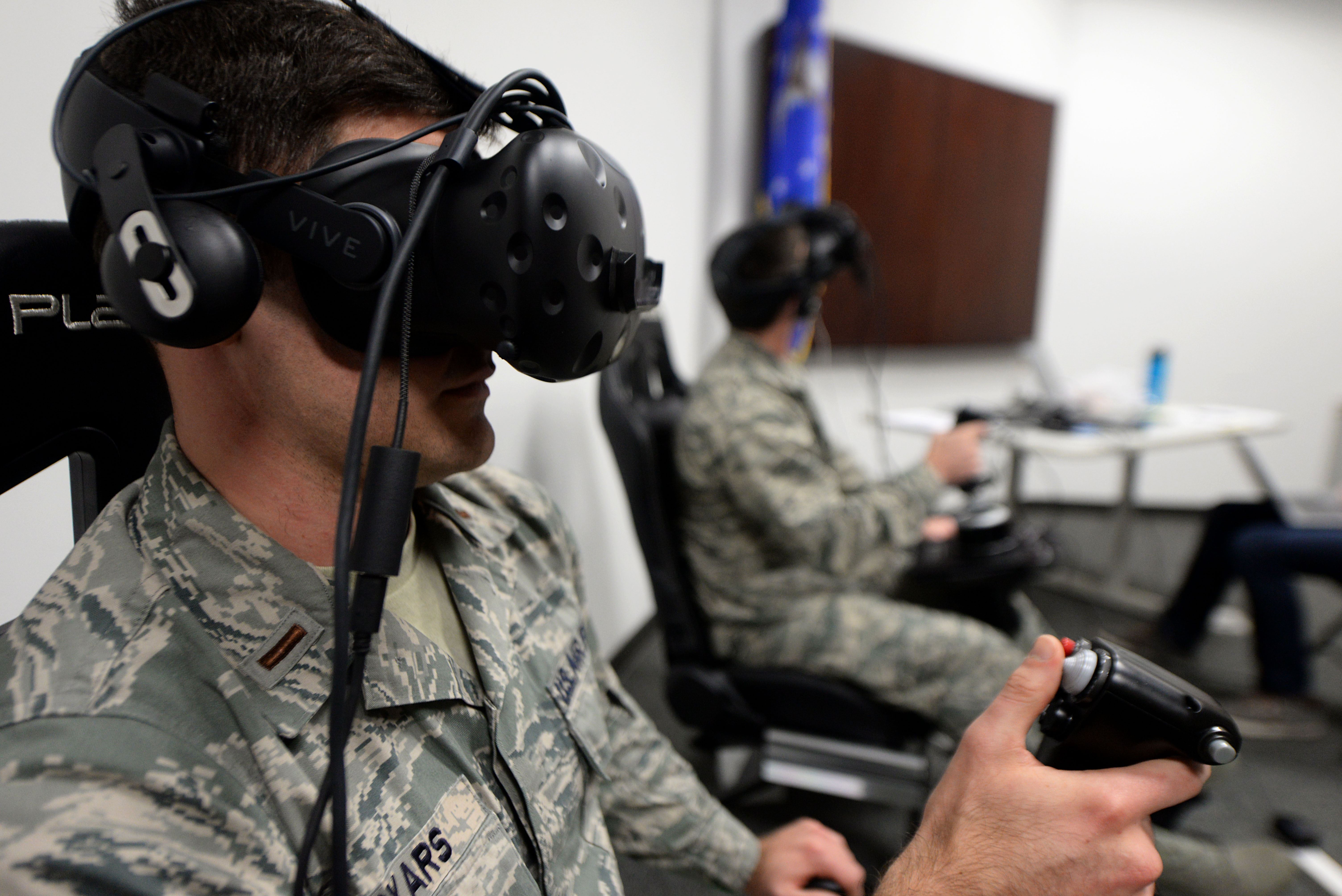
Second Lt. Kenneth Soyars, 14th Student Squadron student pilot, takes off during a virtual reality flight simulation Jan. 10, 2018, at Columbus AFB, Miss. Two subjects flew at a time but no other subjects were allowed to watch or learn from other individuals’ sorties. The Adaptive Flight Training Study pushed subjects to learn through the VR technology. Air Force photo by A1C Keith Holcomb.
The Air Force recently conducted a study to determine whether the virtual reality environment would help adults learn at or above current rates and how the brain works and reacts in conjunction with other parts of the body during the learning process.
The study was conducted Jan. 9-12 at Columbus AFB, Miss., by student researchers from Air Command and Staff College, Air University at Maxwell AFB, Ala. In the study, subjects were to fly a T-6 Texan II simulator. The subjects included experienced pilots, pilots with limited experience, and a group with no flying experience, but none of them had past experience with the T-6.
“The data we are gathering can hopefully help us start to determine the key factors of what makes individuals succeed or perform better,” said Maj. Matt Elmore, an Air Command and Staff College student. “Now this won’t be an end-all be-all, but it’s good to be on the leading edge of this and start the conversation.”
Two other projects related to virtual reality from the Air Education and Training Command will compete against other Air Force submissions in the Air Force Spark Tank competition, which calls for airmen to pitch innovative ideas to senior Air Force leaders.
The two proposals suggest that by digging deeper into how future airmen are trained and educated, “the learning tools available to our airmen will be exponentially greater through the use of virtual reality and augmented reality technologies,” the command said.
Both submissions involve the use of the latest technology to train and educate more quickly and efficiently.
“Our proposed submission is to develop and implement augmented reality for initial use in the training environment,” said Travis Laughlin, program developer with the 367th Training Support Squadron at Hill AFB, Utah. “By developing software intended to work with smart glasses for example, augmented reality has the ability to teach through visual and hands-on learning methods by providing an interactive overlay that identifies key assets and displays technical data information to the user.”